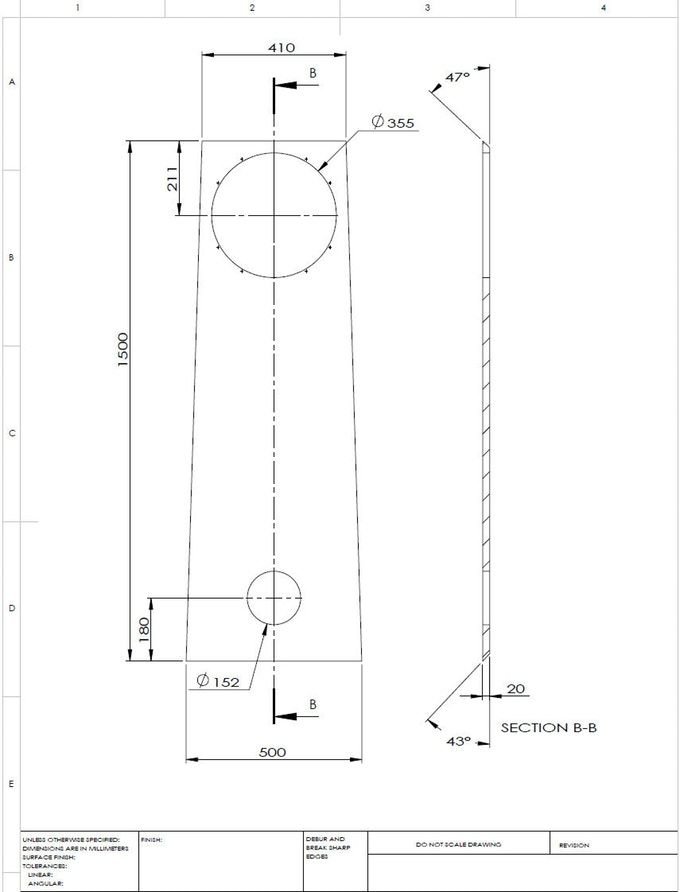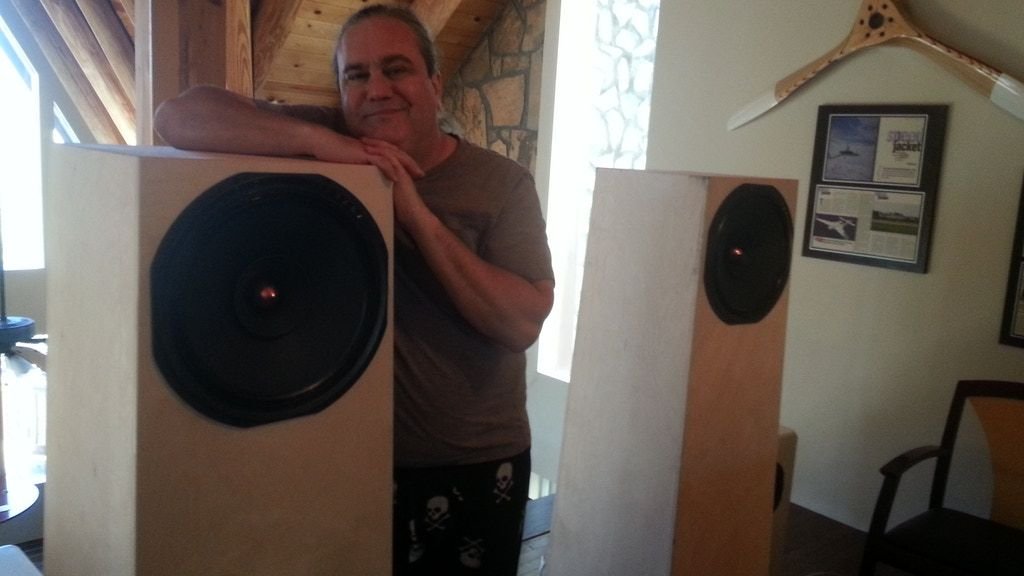
Speakers: What’s Between You, and Your Music

Well-recorded audio is a great start, but there’s no getting around the simple physics of it:
Each ear has one eardrum.
Each speaker has three or four.
This doesn’t work.
-

Human Centric Design
Revolution speakers have ONE driver per side. Just like you do. No time alignment problems, no half-fast compensating for fast-moving tweeters outracing slow moving woofers. Just the Music, no more and no less. Nothing added, nothing missing. It’s uncanny that almost everyone who’s heard the Revolution prototypes say the exact same thing:
“Wow, it sounds like they’re Right Here…”
-

A Rocket Scientist’s Invention
Designed by world-renowned electronic and aerospace engineer Greg Richter, the Revolution Pyramids plug-in for power and take WiFI audio right off your phone, iPad or computer. No wires, no components, nothing else to buy. It’s all digital from you to the amplifier, and the amplifier’s inside. Everything’s inside. There’s a single driver instead of three or four in varying sizes and the amp is so advanced you can’t even blow them up.

One Eardrum, One Speaker.
Our single 15 inch speaker has enough surface area to move air and generate loud, tight bass while the speed of the speaker is fast enough to reproduce highs exceedingly well.
The air-gap in our voice coil is also much tighter than what typical speakers use.
This means we need far, far less power to get the same amount of Loud — just a few Watts is plenty for a normal sized room.
The speaker cone moves only a few millimeters, many times less than a common woofer.
This linear operation means we can generate an accurate rendering of the acoustic scene on your CD or record — the speaker disappears, the music remains. Think of a kick drum — they’re BIG and although the drum skin doesn’t move much, they’ll thump you right off the floor at close range. What we needed was a BIG speaker to pound out the funk down low and still move fast enough to reproduce crisp highs. So we designed one. From scratch.

Why You Might Not Like
Your Favorite Song Anymore
Quite a lot of recent music is compressed to death in the studio to make it playback Louder on iPods, but it sounds just plain crunchy on reference-grade equipment. Can’t say we didn’t warn you. No wonder Neil Young hates MP3s.
If you play crap-nificent MP3 files, they’re NOT going to sound as good as FLACs or CDs or vinyl. The better music is recorded, the better it sounds, so what sounds great on your ear buds may sound horrible on these speakers just like a bright light shows you things that you didn’t see in dimmer surroundings. You CAN get good quality MP3s, and Apple Lossless is good too. Love your speakers. Feed them good Music.

Despite the the fast reaction time, single drivers have frequency response issues.
A single driver and integrated amp describes just about every guitar amplifier made, but what works great for a guitar amp works not-so-great for full-range musical reproduction. Adding a box resonator can help at the low end, but the classic mid-range ‘Shout’ just can’t be solved with coils and capacitors, which is why single-driver designs are usually just audiophile curiosities like: Tesla Coil Speakers
Engineers vs Musicians
Engineers like solid-state amplifiers since they’re reliable, cheap and don’t break. Musicians like tube amps because they sound good.
Check out this great article from Papa Pass on harmonics and distortion if you want to dig into the details of why that is. Since our custom-engineered speakers are so efficient, we need only a few Watts at full power, which is nothing in these days of 500 Watt subwoofers.
In cars. It’s crazy …
Our gorgeous little bridged LM1875-based mixed-feedback amplifier delivers about 50 Watts before clipping. Since that’s more than 5x the power our speakers can handle, and it never clips, that’s one problem solved.
When in doubt, build something new.
Matching amplifiers to speakers is a bit of a Dark Art, since you never know what kind of speakers someone will connect to your amp and expect them to work. Since our amplifier is designed to drive only one speaker, it’s a lot less of an engineering contest to do it near-perfectly. The trick lies in a tube amplifier’s high output impedance, which can be mimicked by using current (as opposed to just voltage) feedback. We impedance-match the amplifier to the speaker using this well-known but not-commonly-used technique.
Short version is musicians all swear we use tubes. We don’t.
They just associate sweet, uncolored sound with tubes and clinical, over-corrected sound with transistors… and until now, they’d be right.
All built-in and ready to go.
Nothing to interface, download or setup. It works right out of the box, but you can also grab your phone and connect to the built-in WiFi webserver to change the speaker's name in case you have a few around the house. We use WiFi for its high bit-rate with no compression so we take whatever file or stream you send and transfer it bit-for-bit to the DSP. From there, it gets processed and handed to the amplifier which drives the speaker cone directly. Boom. Simple as quarks.We’ve built a few of these so far, and keep kicking around making some more. Stay tuned!
